Review| Jackie
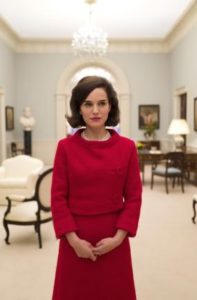 Imagine your husband unexpectedly dying in front of you. Now imagine that his death is as violent as it was a surprise, his skull shattered by a gunman’s bullet, his blood pouring all over your car, your gloves, your dress. How would you handle the grief, the regret, the helplessness? How would you tell your kids why their daddy is not coming home that evening? Now imagine that death and its aftermath taking place on live television. Imagine dealing with the grief while surrounded by cameras, press, and powerful men. How would you convey yourself? What emotions would you show? Which ones would you hide?
Imagine your husband unexpectedly dying in front of you. Now imagine that his death is as violent as it was a surprise, his skull shattered by a gunman’s bullet, his blood pouring all over your car, your gloves, your dress. How would you handle the grief, the regret, the helplessness? How would you tell your kids why their daddy is not coming home that evening? Now imagine that death and its aftermath taking place on live television. Imagine dealing with the grief while surrounded by cameras, press, and powerful men. How would you convey yourself? What emotions would you show? Which ones would you hide?
What if your husband were the President of the United States and you their First Lady? Now it is not just your grieving kids that need your attention, but the entire nation that is looking to your motherly poise. Now you are not just planning any funeral, but ensuring the legacy of your husband’s place in prosperity’s memory. It is not just the emotional well-being of yourself and your children that you are organizing, but the grief of the entire nation. You have to think not just about moving out of your own house, but moving out of the White House as another man and wife are sworn in, making the place their own. And finally, you have the hungry press aiming their pens in your direction. Which of these images do you show them? Which Jackie Kennedy are you?
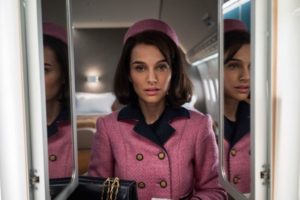 Director Pablo Larraín’s new film about that first lady is a highly unusual biopic. Starring Natalie Portman in a career defining performance, the film is really only straightforward when it captures her steel-faced interview with Life magazine one week after the assassination. The interview opens the film and we return to it repeatedly. To the reporter, Jackie portrays a cold and calculated version of herself, crafting a narrative of the week as carefully curated as a Kardashian Instagram post. But the questions that the interview asks about the events of that week spark the internal memories that make the bulk of the film, revealing a collage of Jackies, as jumbled together in chronology as her memories of the actual week.
Director Pablo Larraín’s new film about that first lady is a highly unusual biopic. Starring Natalie Portman in a career defining performance, the film is really only straightforward when it captures her steel-faced interview with Life magazine one week after the assassination. The interview opens the film and we return to it repeatedly. To the reporter, Jackie portrays a cold and calculated version of herself, crafting a narrative of the week as carefully curated as a Kardashian Instagram post. But the questions that the interview asks about the events of that week spark the internal memories that make the bulk of the film, revealing a collage of Jackies, as jumbled together in chronology as her memories of the actual week.
How many different versions of Jackie can you count in this film? There is the grief chocked, sorrowing Jackie that can only be revealed when she is truly alone. There is the motherly Jackie as she carefully reveals the events to her children. There is the poised Jackie, as she introduces the new White House to the world on television and the nervous Jackie, anxiously looking to her aids for direction and approval. This image is quickly shed for the bold and strident Jackie that walks a fine tightrope as she works among powerful men to secure her husband’s legacy. There is the scared and confused Jackie in the events immediately surrounding her husband’s death. And there is the angry and wounded Jackie that is only revealed in her private conversations to the Catholic priest who buries her children.
This kaleidoscope may sound disjointed, and it does take some time to get used to this style of film-making. To further the varied dream, Larraín’s camera uses multiple film stocks to recreate scenes in both the bright and vivid Kodak used by media crews at the time and the grainy black and white of the news cameras. At times the camera is straightforward, mimicking the calculated interview. Most of the time, it is constantly roaming, the moody and dark lighting reflecting her inner turmoil. And in the end, it is this unusual collage that presents the most realistic and honest version of the internal world of that remarkable woman’s week.
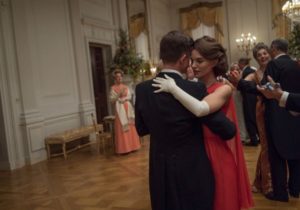 Which Jackie stands strongest in your memory after watching this film? Perhaps it is the emboldened Jackie, protecting her husband’s image among the powerful world of men. It is this Jackie that strides forward through the rain soaked cemetery, ignoring the muck around her heels as she leads the men around her to a suitable grave site. Or perhaps its the angry Jackie, hiding behind her bitterness, lashing out at the Irish priest brought in to counsel her. They walk through a long row of tall trees, a rare private moment in a life surrounded by people. As they talk, her hard layers of anger peel back to reveal the deep confusion and grief they were protecting. This conversation keeps reappearing in the film’s chronology, like it must have run through her head again and again that week.
Which Jackie stands strongest in your memory after watching this film? Perhaps it is the emboldened Jackie, protecting her husband’s image among the powerful world of men. It is this Jackie that strides forward through the rain soaked cemetery, ignoring the muck around her heels as she leads the men around her to a suitable grave site. Or perhaps its the angry Jackie, hiding behind her bitterness, lashing out at the Irish priest brought in to counsel her. They walk through a long row of tall trees, a rare private moment in a life surrounded by people. As they talk, her hard layers of anger peel back to reveal the deep confusion and grief they were protecting. This conversation keeps reappearing in the film’s chronology, like it must have run through her head again and again that week.
The scene with the priest ends as the remains of Jackie’s stillborn baby and young infant are interred beside the grave of their father. As I watched these tiny coffins being lowered into the ground, I finally understood her apparent hardness during the opening interview. It is this grieving Jackie that stays with me – her grief over the joy lost, a joy glimpsed in a brief flashback showing her dancing carefree with her husband, the royalty of the nation.
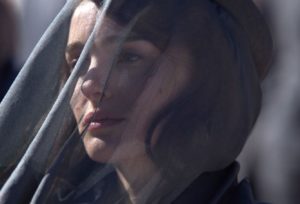 At the end of the movie Jackie is shown marching down the streets of Washington, proceeded by her husband’s casket and flanked by dignitaries. The harsh wind tugs at the black veil over her face, tossing it to and fro, occasionally revealing her pale features underneath. In a similar way, this film pulled back the layers created around this lady, offering a glimpse of her deep humanity
At the end of the movie Jackie is shown marching down the streets of Washington, proceeded by her husband’s casket and flanked by dignitaries. The harsh wind tugs at the black veil over her face, tossing it to and fro, occasionally revealing her pale features underneath. In a similar way, this film pulled back the layers created around this lady, offering a glimpse of her deep humanity


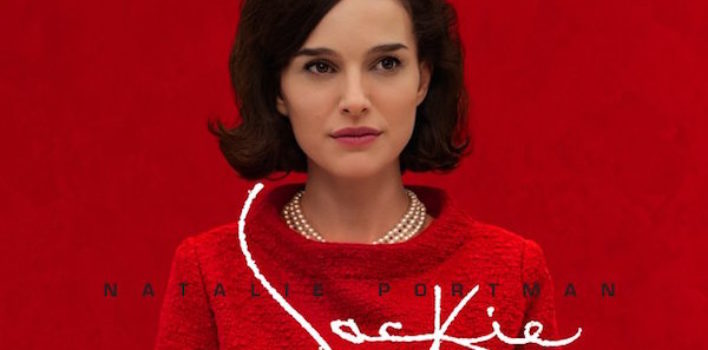


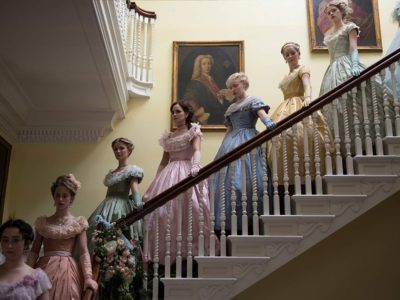


Pingback: Top 5 Actresses 2016 | Reel World Theology